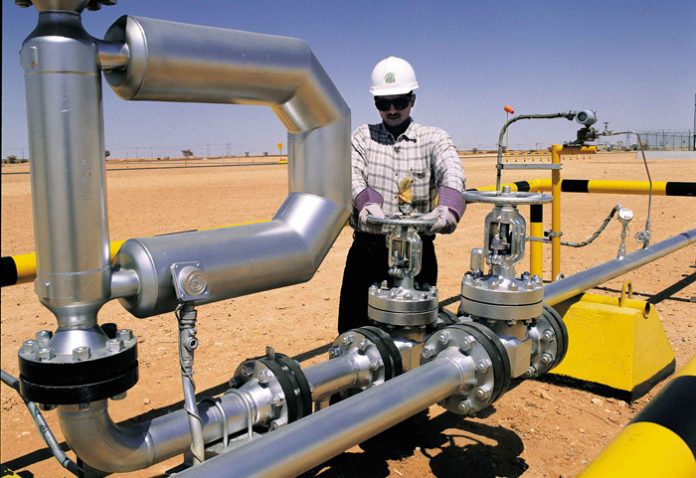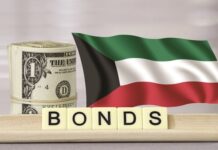Home to the sixth-largest oil reserves in the world and the seventh-highest crude oil exports, Kuwait’s economic well-being is overwhelming tied to global oil prices and trends in the hydrocarbon sector.
Every dollar rise or fall in Brent prices, as well as other vagaries in oil markets worldwide, has an outsized impact on the country’s exports, the government’s fiscal receipts and the nation’s Gross Domestic Product.
Decision by the Organization of Petroleum Exporting Countries (OPEC) to increase oil production in June of last year, after nearly 18-months of self-imposed production cuts, saw economic growth in Kuwait revive in the second half of 2018. But this economic growth is unlikely to continue into the new year, as OPEC decided to reinstate production cuts at the end of last year — for a period of six-months starting January 2019.
The OPEC decision calls for removing 800,000 barrels per day from the market through production cuts among member states, and a further 400,000 barrels by non-OPEC members. Though the specific quotas for member countries were not published, it is clear that Kuwait’s current production rate of 2.8 million barrels per day will be curbed and total production for the 2019 full year is expected to decline by 1.5 percent.
However, this seemingly marginal fall in production, has an oversized effect on Kuwait and its economy, as hydrocarbon products constitute 90 percent of the country’s exports, account for more than 88 percent of government revenues, and form over 55 percent of Kuwait’s GDP. The domineering role that hydrocarbon revenues play in Kuwait’s economy is most evident from the government’s estimated budget for the 2019-20 fiscal year (FY).
Presenting his estimated budget last week, Kuwait Finance Minister Dr. Nayef Al-Hajraf noted that of the total KD16.4 billion in revenues expected in next fiscal year, KD14.5 billion would come from oil exports.
The remaining KD1.9 billion will come from contributions by the non-oil sector, said the minister. On expenditure in FY2019-20, which begins in April 2019, the minister said it would touch KD22.5 billion, and after the mandated 10 percent deductions from total revenues to the Future Generation Fund were made, the budget would notch a KD7.7 billion deficit.
Elaborating on expenses, Minister Al-Hajraf said the largest chunk of spending would continue to be on public sector wages and employee bonuses, which would account for nearly KD16 billion (71%) of total spending. Despite various attempts to encourage greater private sector participation in economy, government spending remains the main driver of market activity.
This dependence on government largesse was underscored in the budget estimate, with Minister Al-Hajraf reiterating government commitment to stimulating development and growing the national economy. In addition to KD2.7 billion (12%) of the estimated budget for other expenses, the budget has earmarked KD3.8 billion (17%) on capital spending, said the minister.
The emphasis he said would be on completing existing projects and executing infrastructure projects in line with the Kuwait National Development Plan: Vision 2035 ‘New Kuwait’. The budget is based on an average oil price of US$55 per barrel for Kuwait Export Crude, and envisions a break-even oil price range of $75 to $80 per barrel, and an average daily oil output of 2.8 million barrels. However, both these figures appear increasingly unlikely, with OPEC-mandated production cuts starting to bite from the start of the year, and Kuwait Export Crude averaging $56.8 per barrel so far this year.
The preponderant influence of oil on the economy was cited as a worrying feature by global ratings agency Standard & Poor’s Financial Services (S&P). In mid-January, while maintaining its ‘stable’ outlook for Kuwait, the agency lowered the country’s GDP growth for 2019 to 2.2 percent from the 3.2 it had predicted earlier.
The agency cited production cuts mandated by OPEC as a reason for its predictions of a lower GDP for Kuwait, underlining the overbearing role that hydrocarbons have in the economy. Brent crude is forecast to average US$55 per barrel over 2019-2022 period, this is not only lower than previous oil price projections for these years, but also nearly 24 percent lower than the average Brent price of $72 per barrel in 2018, said S&P.
Any sharp decline in global oil prices could see the government’s deficit blooming from 6.5 percent of GDP in the last fiscal to an average of 19.5 percent over the next four years, warned S&P. With oil in the range of $55 per barrel over the medium term, we also anticipate the country’s current account surpluses will begin to moderate and reach balance toward 2022 as the import bill continues to grow.
Much of the deficit could be financed by asset drawdowns from the General Reserve Fund maintained by the country’s sovereign wealth fund manager, the Kuwait Investment Authority (KIA), as well as from debt issuance on domestic and international markets.
But, if parliament approves the new debt law, which authorizes raising the ceiling on debts and borrowing terms, and government goes on a borrowing spree, the country’s debt is likely to jump to more than 50 percent of GDP in 2022, from the less than 20 percent in 2017, warned S&P. Beyond 2019, growth rates could rise moderately to an average 2.5 percent over 2020-22 period from the eventual ending of OPEC production cuts and the gradual increase in oil production capacity.
Kuwait plans to increase its maximum oil production capacity from the current 2.8 million barrels per day to an ambitious 4.75 million barrels per day by 2040, mainly from new oil discoveries and enhancing output at existing mature fields.
In addition, restarting production within the so-called Partitioned Neutral Zone (PNZ) between Kuwait and Saudi Arabia, which was previously halted due to disagreements between the two countries, could add around 0.3 million barrels per day to Kuwait’s daily output. Besides overdependence on hydrocarbon revenues, the relatively weak institutional and structural reforms in the country were also cited as a cause for concern by S&P.
While presenting the estimated budget, the finance minister had pointed out that the government was currently instituting structural economic and fiscal reform programs, and control of expenditures was a necessary precondition for these reforms to succeed over time.
“We believe that reform starts with curbing wasteful spending, increasing collection rates of dues to the government’s various entities, while maintaining a healthy rate of capital expenditure on infrastructure and minimizing the impact of our fiscal reforms on the Kuwaiti people,” said Al-Hajraf. The government’s previous attempts at diversifying the economy and introducing financial and administrative reforms have been, at best, lackluster.
Belt tightening measures and pledges of financial prudence in the wake of low oil price scenarios tend to evaporate every time oil rebounds. However, the downside risk to this misplaced ebullience could come if oil prices fall lower than expected, and stay so longer than expected.

















